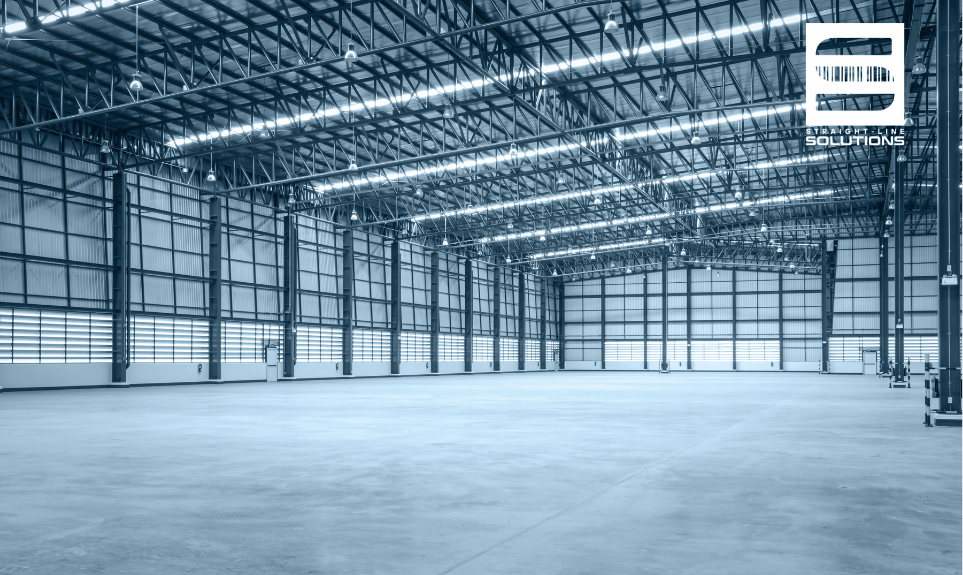In a supply chain business, warehouse operations must be fast, lean, and smart. One key technology driving modern transformations for supply chain operations has been designated the “Internet of Things,” or IoT. Put simply, IoT denotes a network of physical devices equipped with sensors, software, and connectivity that enables them to collect and exchange data quickly and accurately.
But how does IoT translate into practical gains for materials management in the warehouse? And how can companies use it to reduce errors, cut costs, and improve productivity? Straight Line Solutions specializes in designing whole-enterprise end-to-end asset and materials management solutions for companies with intense asset and materials requirements, from hospitals to warehouses to manufacturers. Let’s take a closer look at how full implementation of IoT creates an environment where technology is used optimally to reduce human error, keep materials moving, and keep managers informed.
What IoT Is and Why It Matters
IoT refers to using physical objects such as scanners, forklifts, conveyors, pallets, and even shelving units, to record, send, and receive data via an internal wireless system. In warehouse environments, these devices become integral to a broader interconnected operation that provides workers and managers with real-time clarity and control over inventory, assets, and workflows.
Rather than relying on periodic scans or manual tracking, IoT-enabled warehouses gain constant, automated visibility into the movement and condition of materials. The result? Better decision-making, streamlined operations, and fewer costly surprises.
Smarter Materials Management with IoT: 5 Benefits
Incorporating IoT into materials management helps eliminate many of the pain points associated with traditional warehouse operations. Here’s how:
1. Real-Time Inventory Visibility
IoT-connected sensors and RFID tags can continuously monitor inventory levels, locations, and movements. Instead of waiting for end-of-day reports or scanning delays, warehouse managers can view up-to-the-minute data from custom-designed dashboards that collect and organize information directly from IoT devices. This allows for:
- Immediate identification of stock shortages or overages
- Improved picking and replenishment accuracy
- Reduced time spent on manual cycle counts
2. Streamlined Receiving and Putaway
With IoT devices such as smart shelves, RFID portals, and mobile scanners in place, materials are automatically identified and logged as they enter the warehouse. Paired with intelligent routing software, these tools help direct materials to their proper location without delay. This results in:
- Faster receiving times
- Fewer misplacements
- Seamless handoffs to other systems or departments
3. Improved Asset Tracking and Utilization
In addition to inventory tracking, IoT can be applied to asset tracking. Forklifts, pallets, returnable containers, and other assets can be equipped with IoT trackers to monitor usage and location. This prevents unnecessary downtime and too much capital asset acquisition due to inefficient asset allocation. It ensures that high-value equipment can always be identified, located, and sent to where it needs to be. It also supports predictive maintenance and improved asset longevity by alerting teams when equipment needs necessary service or maintenance before a failure occurs.
4. Enhanced Environmental Monitoring
IoT sensors can track temperature, humidity, and other environmental conditions within storage areas, which is especially important for sensitive or regulated products. Automated alerts ensure sensitive inventory stays within required thresholds and help prevent noncompliance, spoilage, and waste.
5. Data-Driven Decision-Making
The continuous data stream generated by IoT devices provides warehouse leaders with deep insights into operational trends. Over time, this data can help identify inefficiencies, uncover opportunities for automation, fine-tune labor and resource planning, and inform future growth and evolution.
How To Make IoT Work for You
There is a vast portfolio of IoT-enabled products ranging from rugged mobile computers and industrial scanners to RFID readers and real-time locating systems (RTLS) built to simplify and strengthen materials management. Integrated hardware, software, and services integrate into a unified platform that can help you:
- Automate asset identification
- Monitor inventory flow across the facility
- Access real-time data at your fingertips
- Print RFID/barcode labels at the point of use
In other words, IoT isn’t just a buzzword; it’s a practical, scalable way to make your warehouse smarter and more efficient.
Whether manufacturers or pass-through warehouses, supply chain operations are becoming more demanding and complex, and customer expectations of accuracy and timeliness continue to rise. In this climate, scaled implementation of IoT technologies can provide your operation with the visibility and responsiveness it needs to remain competitive.
Whether you’re looking to improve inventory accuracy, speed up receiving, or reduce operational costs, IoT integration may be the key to improving your bottom line. With Straight Line Solutions, you don’t have to navigate it alone. Contact us today to discover how we can become your premier IoT technology partner, making your warehouse a data-driven powerhouse.

